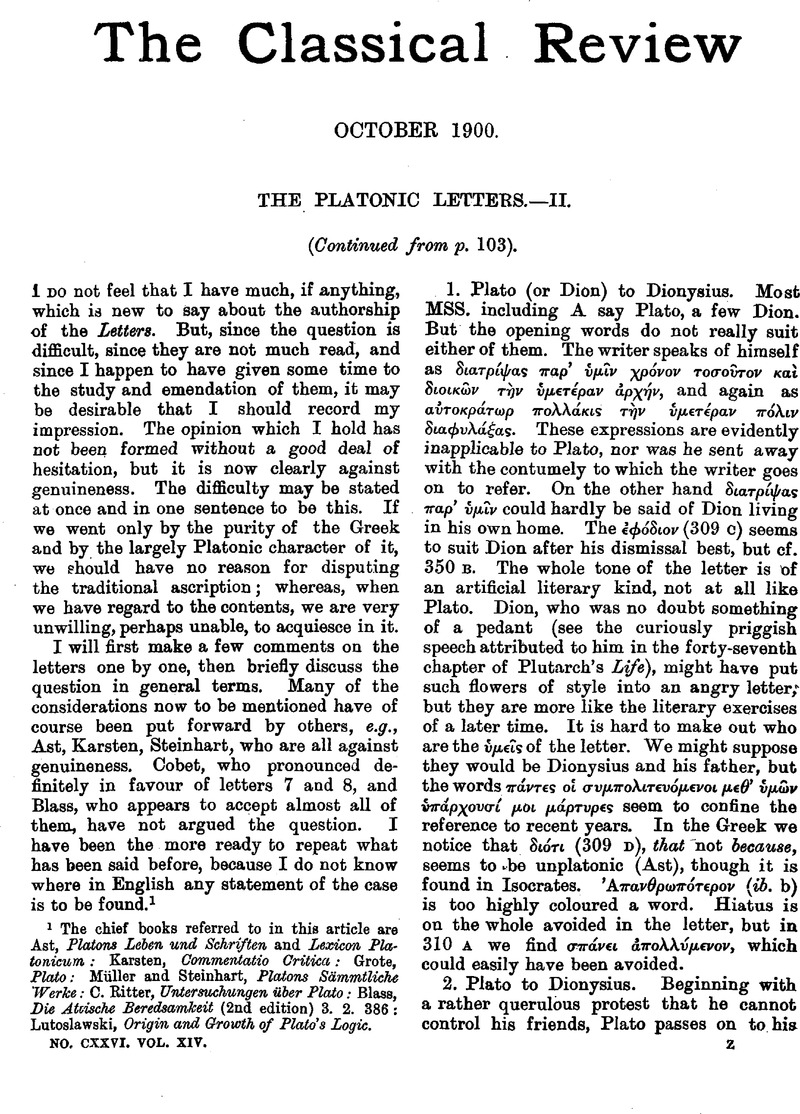No CrossRef data available.
Published online by Cambridge University Press: 27 October 2009

page 335 note 1 The chief books referred to in this article are Ast, Platans Leben und Schriften and Lexicon Platonicum: Karsten, Commentatio Critica: Grote, Plato: Müller and Steinhart, Platans Sämmtliche Werke: C. Ritter, Untersuchungen über Plato: Blass, , Die Atcische Beredsamkeit (2nd edition) 3. 2. 386Google Scholar: Lutoslawski, Origin and Growth of Plato's Logic.
page 336 note 1 We are reminded of the verse of Alexis: ![]() . The words of the letter are
. The words of the letter are ![]() . It should be noticed that (1) though we are familiar with ‘the Thirty,’ no other writer speaks of Fifty-One: (2) the functions of agoranomi and astynomi seem here regarded as not supplementary to the other business of the two boards, but as constituting their main employment: (3) although the city and Piraeus are first distinguished, the writer then goes on to speak of them together as ‘the cities,’ a description which is probably unique. The plural of ἄστν is by no means common, but it occurs several times in the Laws.
. It should be noticed that (1) though we are familiar with ‘the Thirty,’ no other writer speaks of Fifty-One: (2) the functions of agoranomi and astynomi seem here regarded as not supplementary to the other business of the two boards, but as constituting their main employment: (3) although the city and Piraeus are first distinguished, the writer then goes on to speak of them together as ‘the cities,’ a description which is probably unique. The plural of ἄστν is by no means common, but it occurs several times in the Laws.
page 341 note 1 So Karsten says. I do not find it explicitly stated in critical editions.
page 343 note 1 In one of these Aeschines is made to refer to the pleasantries of Demosthenes, ‘at which no one ever smiled but Ctesiphon.’ We should like at any rate this jeer to be genuine, and possibly it is.